
Joshua Tree National Park is in southern California located where two distinct desert ecosystems, the Mojave and the Colorado, come together. A beautiful variety of plants and animals make their homes in a harsh environment sculpted by strong winds, occasional downpours, long periods of no rain (it only rains 6 days per year and evidently very enthusiastically when it does), and high temperatures May – September. It also features surreal geologic formations, stark desert landscapes, and of course the twisted, bristled Joshua trees.
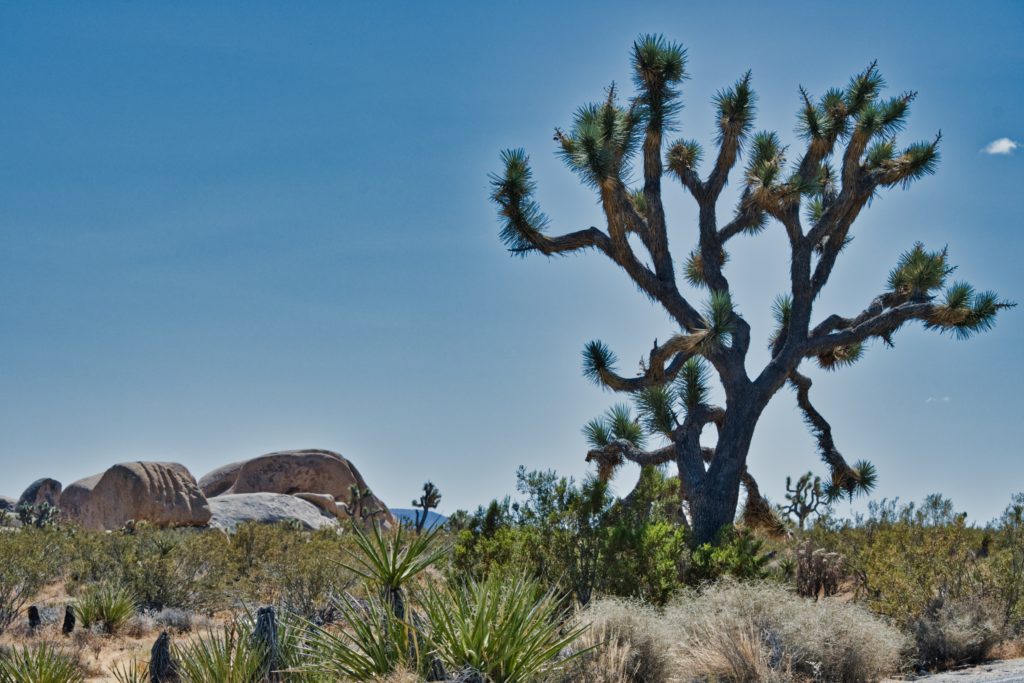
Joshua Trees are native to the arid southwestern United States, specifically California, Arizona, Utah, and Nevada, where they are confined mostly to the Mojave Desert between 1300 and 6000 feet elevation. Joshua trees are fast growers for the desert; new seedlings may grow at an average rate of 3.0 inches per year in their first 10 years, then only about 1.5 inches per year. The trunk consists of thousands of small fibers and lacks annual growth rings, making determining the tree’s age difficult. This tree has a top-heavy branch system, but also has a deep and extensive root system, with roots reaching down to 36 feet. If it survives the rigors of the desert, it can live for hundreds of years; some specimens survive a thousand years. The tallest trees reach about 50 feet. New plants can grow from seed, but in some populations, new stems grow from underground rhizomes that spread out around the parent tree.

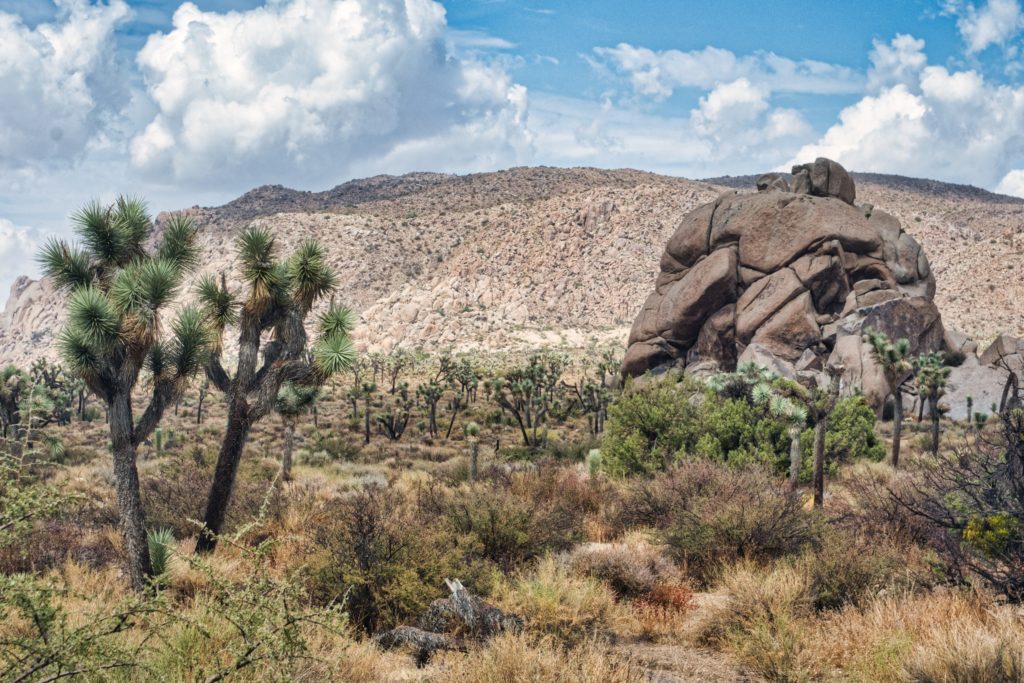

Cholla Cactus are a shrubby cacti with cylindrical stems. These stems are modified branches that store water, produce energy through photosynthesis, and in the spring flower. They are common in Joshua Tree National Park.

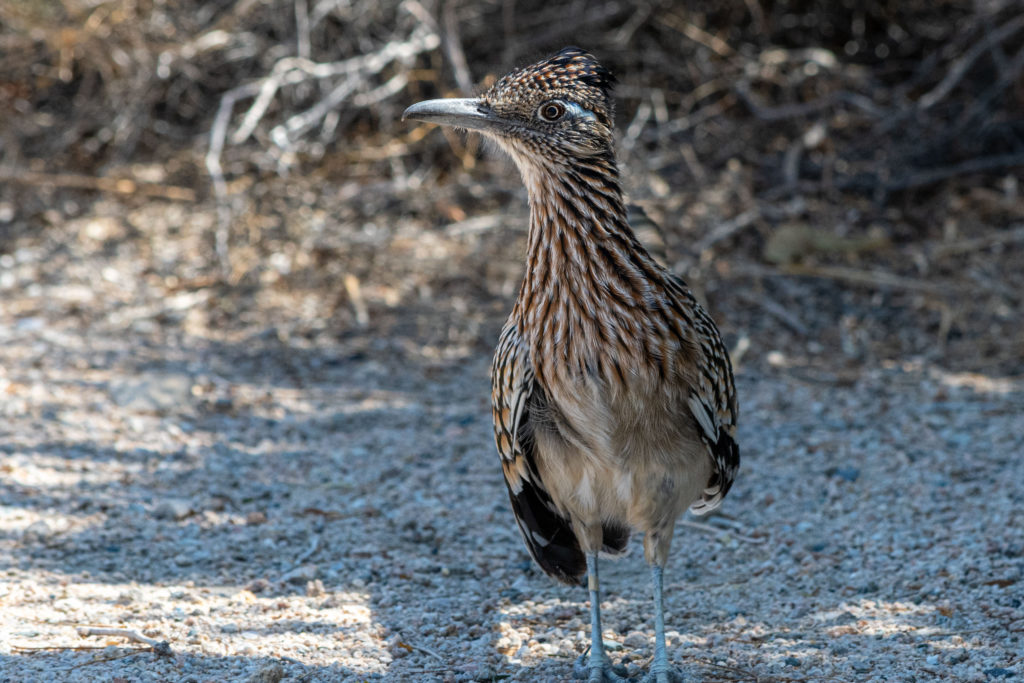
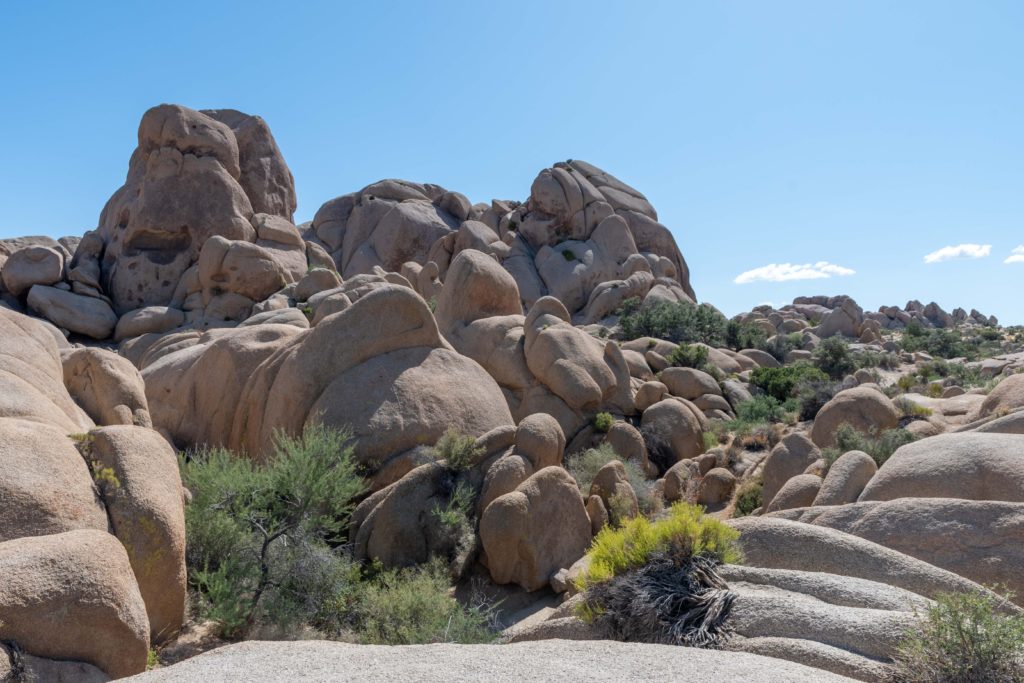
Where did the rocks come from? As we drove through the park there were big piles of rocks seeming strewn about randomly. The sedimentary rocks are about 100 million years old and have been pushed up by tectonic action then exposed and shaped by erosion.

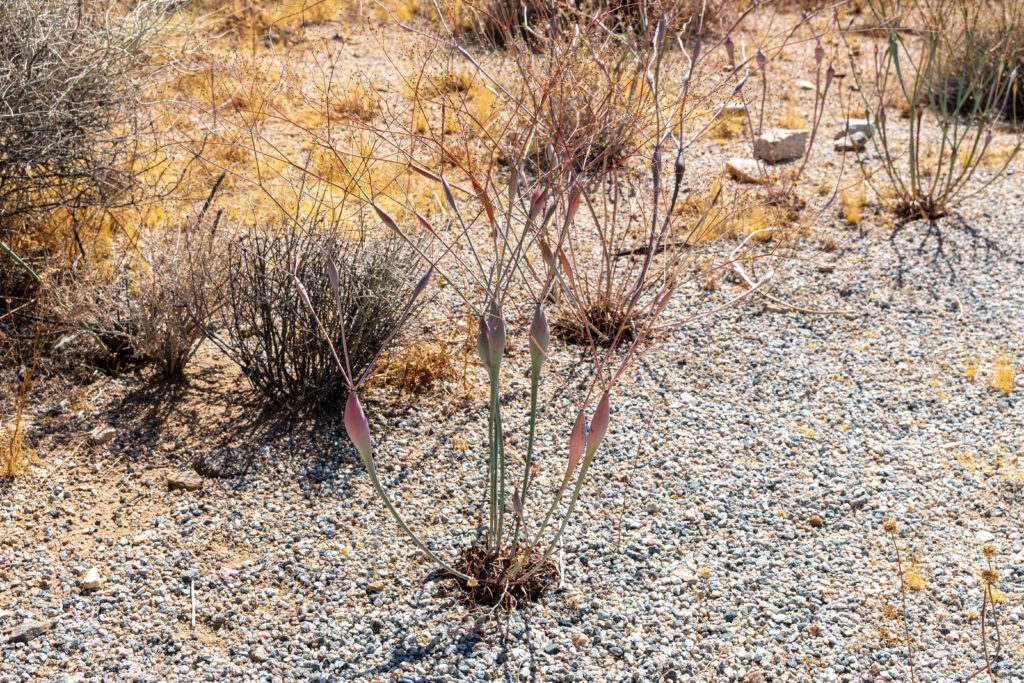

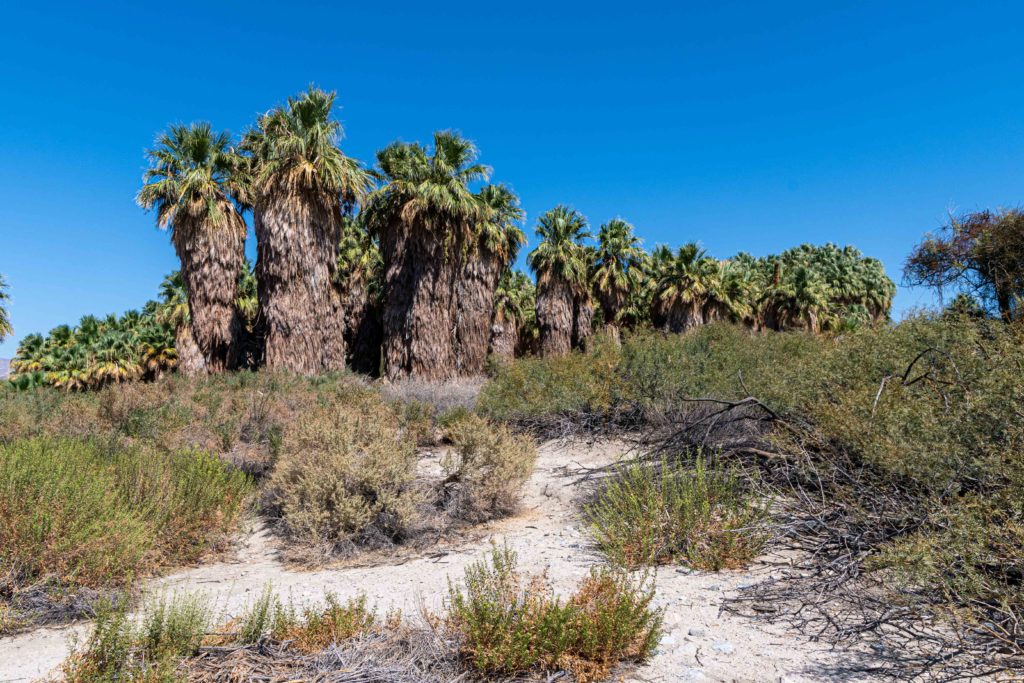
As the crow flies it is not very far from Joshua Tree to Palm Desert, by road it took a little more than an hour to get there. In Palm Desert we visited Coachella Valley Nature Preserve. In late September it had not yet opened for the season due to the extreme heat of summer. We were told evening low temps had only recently fell from the 90’s into the 80’s. The staff was arriving the same day we visited and let us in to walk along the San Andreas fault. The fault has opened up pathways through the bedrock for water to percolate up forming the oasis.

Joshua Tree is a great place to learn about deserts of the southwest. The desert is a different kind of beautiful than we are used to. If you go, be careful. It is very easy to get in trouble on a desert hike. Take lots of water and do not assume you can hike as far in the desert as you can in a more humid lower temperautre location.